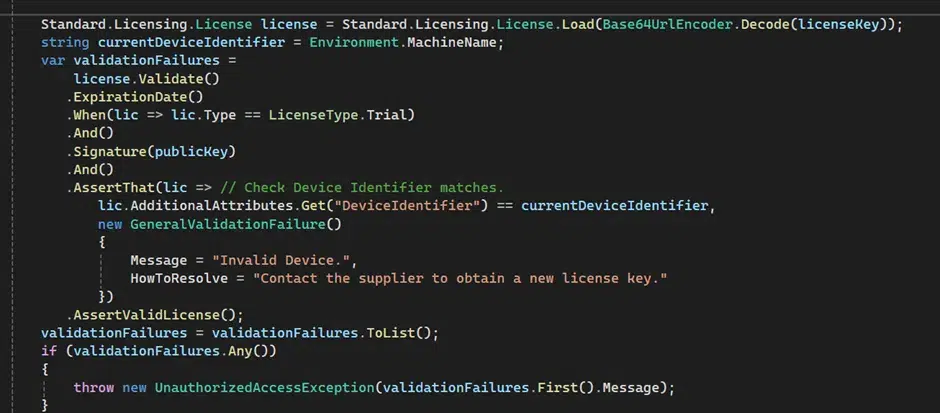Securing Your .NET Application: A Step-by-Step Guide to Implement Licensing with .NET Reactor and Standard.Licensing
In the world of software development, protecting your hard work is crucial. One effective way to safeguard your .NET application is by implementing licensing mechanisms. In this blog post, we’ll explore two approaches — using the paid tool .NET Reactor and the free library Standard.Licensing — to help you secure your application and ensure that only authorized users can access it.
1. .NET Reactor
.NET Reactor is a powerful and popular tool that provides code protection and licensing features for .NET applications. Follow these steps to implement licensing using .NET Reactor:
Step 1: Obtain .NET Reactor
Visit the .NET Reactor website and download the latest version. Install it on your development machine.
Step 2: Configure .NET Reactor
Launch .NET Reactor and open your project. Navigate to the “Settings” tab and configure the settings according to your preferences, including the type of protection and licensing parameters such as expiration date, usage restrictions, etc.

Step 3: Protect Your Application
Click on “Protect” to secure your application. .NET Reactor will generate a protected version of your application.

Step 4: Generate License Key
Use .NET Reactor to generate a license key for your application. This key will be used to validate the license during runtime.

Step 5: Integrate Licensing Code
Integrate the generated license file into your code using the provided API. In your licensing project, add the necessary code to validate the license key during application startup. This may involve checking the key’s validity, expiration date, and other relevant details.
2. Standard.Licensing
If you’re looking for a free and open-source alternative, Standard. Licensing is a robust library that simplifies licensing implementation in .NET applications. Here’s how to get started:
Step 1: Install Standard.Licensing
Install the Standard. Licensing NuGet package in your Visual Studio project. You can do this using the NuGet Package Manager or by adding the package reference directly to your project file.

Step 2: Create a License File
Generate a license file that contains information about your application, such as the license key, expiration date, and any custom data you want to include.


Step 3: Integrate Licensing Code
In your application, add code to validate the license during startup. Utilize the Standard licensing library to check the license file’s integrity and extract relevant information.


Conclusion:
Securing your .NET application through licensing is crucial for safeguarding your hard work. Whether you opt for the robust features of “.NET Reactor” or the flexibility of “Standard Licensing,” both methods offer effective ways to control access to your software. Choose the one that best suits your project’s requirements and ensure a smooth, protected user experience for your application.


